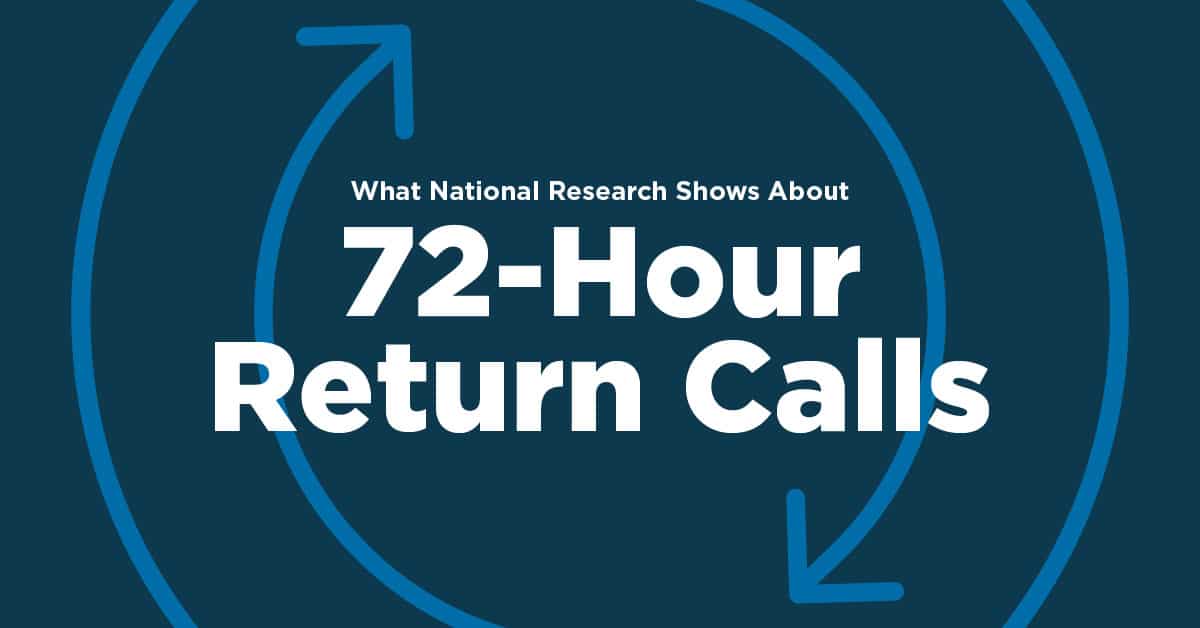Every April, first responders and data enthusiasts alike gather in Austin, Texas, for the annual leading EMS, fire, and hospital industry conference. For four days, top thought leaders from these industries meet to hear the latest trends, innovations, and research reshaping the industry, learn how to better support their teams to get ahead of the tide, and network with other data-driven leaders.

Held from April 22-25, Wave 2025 covered a variety of impressive topics throughout the week. Here are the five themes that were at the forefront of discussions in fire and EMS:
1. Artificial Intelligence
Front and center on the world stage, AI is an incredible new technology that we’re only skimming the surface of what it can bring to the industry. Despite the fact that we need to proceed cautiously and responsibly, we’re excited to see how its role will continue to evolve in the years to come.
At Wave, the air was abuzz with talks surrounding AI. Chief Innovation Officer of Cincinnati Children’s Hospital, Todd Ponsky, used his session Global Education Moonshot: Using AI and Media to Transform Medical Knowledge Access to shed light on the new technology’s role in fighting global disparities in patient care.
Cincinnati Fire Department’s program manager, Robert Hug then shared how his department is transforming their documentation and analyses of their data through the integration of AI into Snowflake in Beyond ChatGPT: Unlocking the Power of AI in Snowflake.
Finally, we learned how ESO will be tackling AI from ESO Senior VP of Engineering Russell Beggs, Senior VP of Product Reinhard Ekl, and Chief Innovation Officer Brandon Martinez in their session Artificial Intelligence in ESO Products: Efficiency Gains You Can Trust. They discussed the responsible approach ESO is using to harness the new technology to improve the efficiency and accuracy of documentation through our new auto-generated narrative feature.
2. Mobile Integrated Healthcare
EMS is on the front lines of providing medical care for their communities, treating the most vulnerable of society, oftentimes on a repeated basis. More than ever before, data and strategic partnerships are being used as tools for empowering first responders to get to the root of patients’ issues through Mobile Integrated Healthcare/Community Paramedicine programs. These programs can be incredibly impactful for both the agencies and the patients they treat.
Kicking off the discussion, Associate Chief Medical Officer of Global Medical Response, Gerad Troutman, explored the power of these alternate care models in redirecting non-life-threatening cases away from the ER while providing proactive care for repeat callers in his talk From Sirens to Solutions: How EMS Data is Driving Smarter Healthcare,
Then, in Unifying Community Paramedicine (CP) and Mobile Integrated Health (MIH) Data: A NEMSIS Initiative, NEMSIS Technical Assistance Center Program Director Kevin Nicholes discussed how impactful data unification can be for MIH/CP programs in improving everything from patient outcomes to billing practices.
Continuing to drill down into the importance of partnerships to MIH/CP programs, we learned how agencies across the city of Tulsa combined forces to leverage their different strengths and skills in order to get to the root of their patients’ problems thanks to Aligning Community Data for the Common Good by Tulsa Fire Department Chief of EMS, Justin Lemery.
Finally, even though MIH/CP is an impactful tool for providing care for your community, you need the right funding to make it happen. Asbel Montes from Solutions Group Services gave us the rundown on what not to do when seeking a bigger budget in his talk, The Top 5 Costly Mistakes to Avoid When Seeking Additional Funding for MIH/CP. Then EMS/MIH Consultant Matt Zavadsky of PWW Advisory Group dove into the importance of using data to prove the value of the services you provide in From Data to Impact: Demonstrating Your Agency’s Value to the Community.
3. Data-driven innovations
Every day, organizations use ESO data to do incredible things, but without the framework to define, measure, and reduce errors in data, you can’t pull quality insights from the information gleaned. This was emphasized in Reducing Errors, What Percentage of Plane Crashes Would Be Okay?, where Cox Health EMS Medical Director Matthew Brandt shared strategies for using data to improve care, foster accountability, and ensure adaptation, along with in Be Curious not Furious: A Data-Driven Approach to Change by TowerDIRECT Paramedic Jason Drinkwater, where we learned how to measure what matters.
Then, in Conducting Qualitative Research with Your Team: A Crash Course of Meaningful Outcomes, Fire Chief Dr. Brett Ellis from the City of Webster Grove took it a step further, teaching us it’s not just data quality that needs to be considered but who’s benefiting from the data that it pays to use qualitative research that reflects the personalities and passions of your team.
We also learned that although data and technological advancements are doing incredible things for first response, organizations need to decide what’s best for them. In Assessing Your Technology Needs: A Practical Roadmap for Smarter Solutions, a session by Principle of Acceleration Strategies, Robert Edson, gave insights into how to determine which innovative tools are necessary for your organization without overspending or underutilizing resources.
We also drilled down into what we should be measuring as an industry. Recently, data has shown that response times aren’t a reliable indicator for measuring outcomes, as they rarely reflect the quality of care provided. Chief Medical Officer of the Forth Worth Office of the Medical Director, Jeffrey Jarvis, is well versed on the topic and used his talk, Improving Clinical Care Using National EMS Quality Alliance (NEMSQA) Benchmarks, to share what your organization should be measuring instead.
Using EMS Data to Drive Safety: Resources, Lights, and Sirens by UNC Department of Emergency Medicine’s EMS Chief Medical Officer Joseph Grover and Beyond Response Time Standards, the Evolution of Contract Compliance by Global Medical Response Clinical Quality Managers Brad Cramer and Jake Shores, both also dove into response but focused more on best practices for minimizing lights and sirens usage without sacrificing standard of care.
We also learned how data is helping us build a better offense in our efforts to keep our communities safe. In Why Risk Reduction Planning Zones are Essential, AP Triton Senior Associate Frank Blackley discussed how the right insights can help agencies more effectively visualize and reduce risks. In the FSRI Fire Dynamics Research Update, UL-FSRI Director of Research Craig Weinschenk gave us the latest learnings related to WUI fires, electrical fires, and search and rescue.
Cary Fire Department’s Fire and Emergency Services Analyst Blake Boyd raised another good point regarding measuring outcomes in Outliers: An Inclusive Conversation. He led a discussion on how traditional data analysis methods hinder fire departments’ ability to identify and manage outliers and what best practices could be taken instead.
There are many uses for data. It doesn’t just push us towards better patient outcomes or help us get paid, as discussed by Systems Design West Education Direction Alissa Christenbury in Data-driven insights: improving ambulance billing through documentation analysis, but it is also a tool for keeping our teams safe. In The Power of Reporting: Using Data to Foster Trust and Prevent Violence, Commander Mandy Johnston of Peel Regional Paramedic Services spoke to the violence paramedics face on the job, along with the role data reporting can play in supporting prevention efforts. Then, in PPE Exposure to Energy Storage Fires, Texas A&M Division Director Chris Angerer discussed the data-driven best practices for protecting your department from the devastating impacts of exposure.
SCEMSA Executive Director Henry Lewis really hit home the importance of data and how, when we work together in a unified front to utilize our collective insights and talents, we can do incredible things. His talk Leveraging Data for EMS Funding: the SCEMSA Story shared how the South Carolina EMS Association has overcome both a hiring and funding deficit by doing just that.
This leads us to create the right culture around your data – from using insights to transform your leadership, as discussed by Dare County EMS Deputy Chief Terence Sheehy in Transformative Leadership: Don’t Give Up the Ships, to the importance of promoting the creation and use of data at your own organization as touted by the President/CEO of International Public Safety Data Institute, John Oates, in his talk What is Your Data Culture?, we were taught a lot about making your agency a hub for fostering excellence and growth.
4. Prehospital and hospital interoperability
Day in and day out, EMS providers make critical decisions with lives weighing in the balance. Today, data and technology are instrumental in closing the feedback loop and ensuring they have the necessary information to make the right call the moment they need it.
In ESO Health Data Exchange (HDE): The Bridge to Better Patient Outcomes, VHC Health EMS Liaison Justin Nelson discussed how his team used ESO HDE to better facilitate communication with their partners, increasing feedback loop closures from 11% to 94% and increasing overall EMS transports by 7%, which ultimately transformed both the quality and quantity of the care they were able to provide.
In Precision Under Pressure: How Technology Is Transforming Prehospital Dosing and Clinical Support, Hinkley Medical CEO Tristen Hazlett and Physician Abraham Campos gave us a run down on how powerful data-driven decision-making can be in shaping the future of prehospital care while Gaining “Insight” into Patient Acuity: Enhancing Response Plans by Linking Emergency Medical Dispatch (EMD) Codes to Patient Care Interventions by Wake County EMS Deputy Medical Director Jefferson Williams explained how insights can improve patient-based response planning and prioritization today.
As the role of fire and EMS continues to rapidly change beyond first response, data is helping them to become a bigger part of the patient care continuum than ever before. In The Evolving Role of Fire and EMS in Healthcare, Axene Continuing Education CEO & Founder Eric Axene, MD, FACEP, discussed how data-driven partnerships are transforming the relationship between prehospital and hospital care.
The more we understand the entire continuum of care, the clearer we can see EMS’s full range of capabilities for treating patients and the impact they make. In To Transfuse or Not to Transfuse: Using ESO Data to Evaluate the Utility of Implementing a Prehospital Blood Product Program, Medical Director of Cincinnati Fire Department, Dustin Calhoun, dove into the current state of prehospital 911 blood product administration and our learnings thus far.
5. NERIS
The nervous excitement around NERIS was palpable at Wave, and crowds were out the door for sessions surrounding the new system. UL-FSRI Director of Research Craig Weinschenk led a session called National Emergency Response Information System (NERIS): Changing the Future of Fire Departments, where he gave a highly anticipated update on what’s currently happening with the project and how NERIS is set to transform the industry.
In NERIS is Near Us, ESO product experts Jennifer Billingsley and Katie Heins gave a demo on the brand new NERIS-compliant Fire Incidents and answered a wide range of questions regarding the new response system. If you missed it, have no fear. You can check out our NERIS FAQs here, and if you don’t find an answer to your questions, submit them here, and we’ll be happy to assist you.
Stay ahead of what’s trending in the industry.
Our data experts at ESO compiled a few resources to help you keep up with a shifting industry while using aggregated data to ensure your organization stays at the top of its game. Check out the 2025 ESO EMS and Fire Services Indices to see where your organization stands against national benchmarks in important metrics. Pulling from the ESO Data Collective, the Indices help your team see where you’re on top of your game and areas that are ripe for improvement, along with sharing best practices that promote growth.
Read the 2025 ESO Fire Service Index
It’s not too early to start thinking about Wave 2026!
Mark your calendars for April 7-10, 2026, to join us in Austin, TX, for four days of thought leadership, networking, and learning. If you’re interested in being the first to get the inside scoop on what data-driven advancements and technologies are trending industry-wide, mark your calendars and stay tuned to register.



